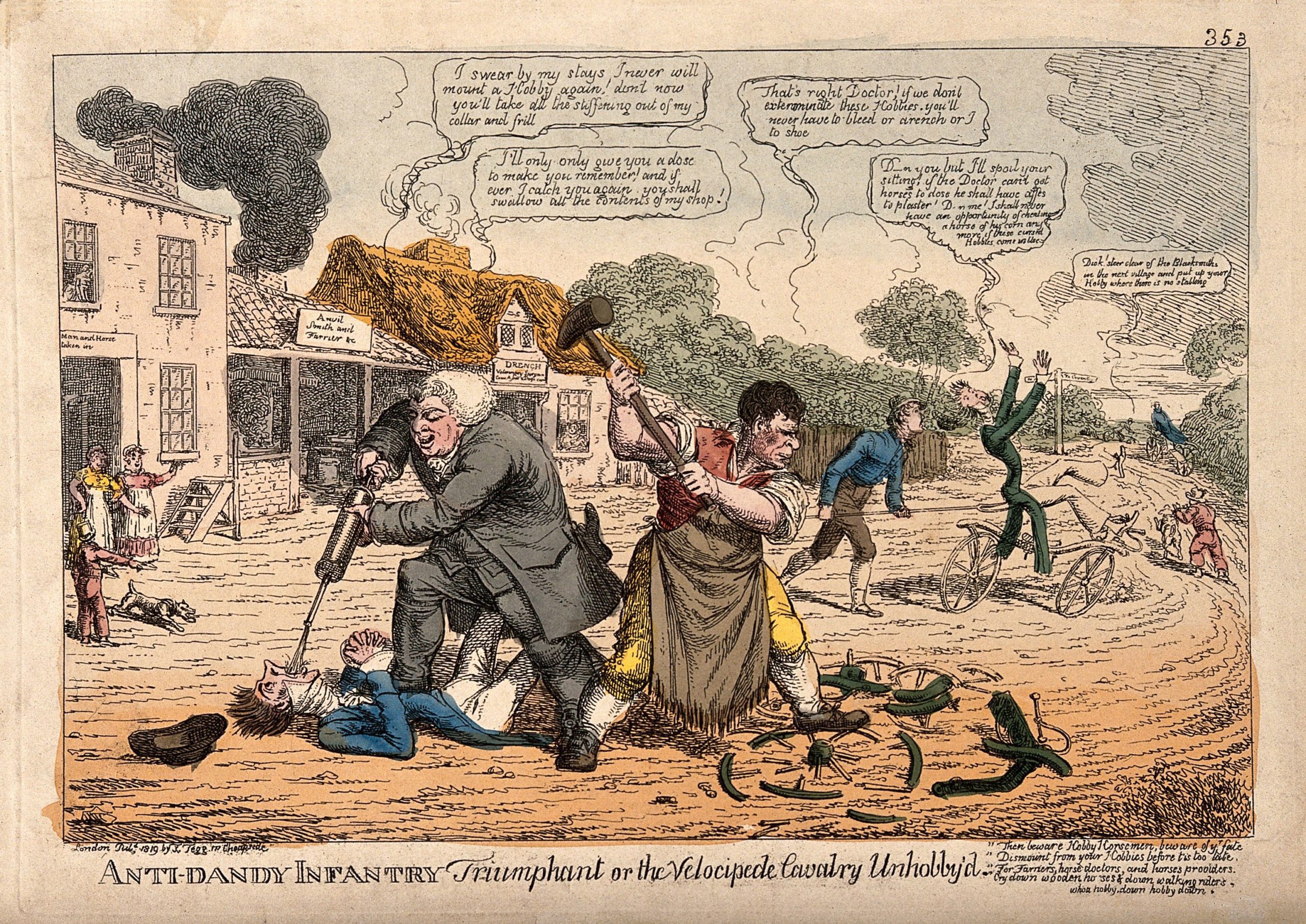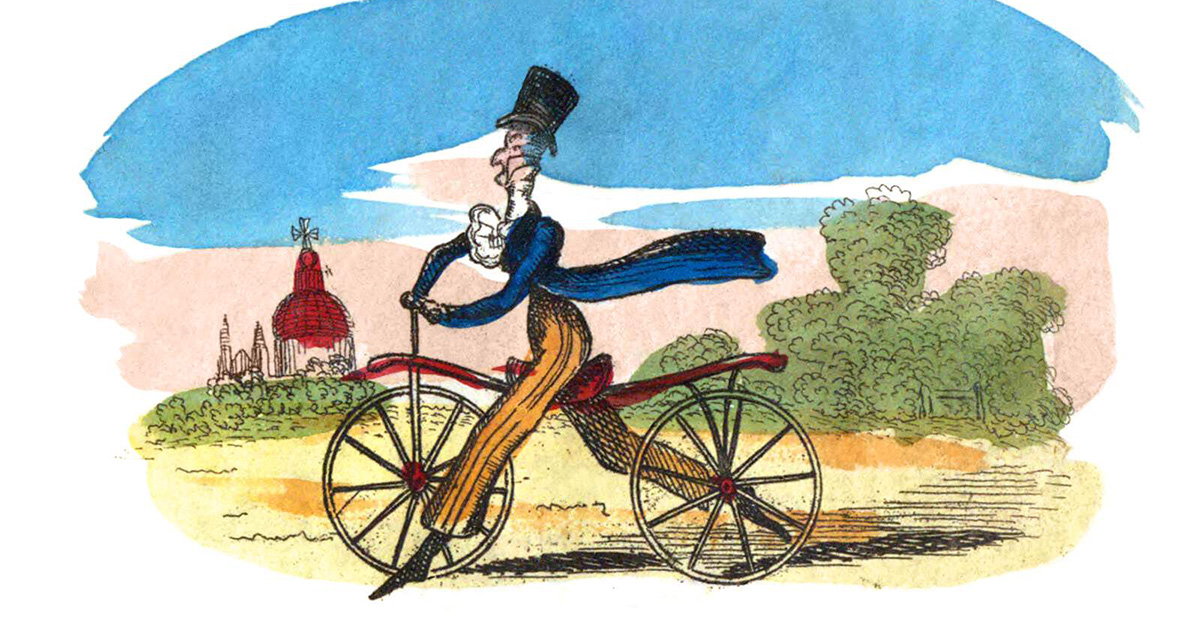I would like to introduce you to something I discovered during my time researching for Horrible Histories: the dandy horse – a horse that, while not a living creature, still managed to cause stress for veterinary surgeons.
The British dandy horse was developed from the German Von Drais’ pedestrian cycle and was at the height of its popularity in 1819 in London. Patented in 1818, the forerunner to the modern day bicycle attracted an enthusiastic if small group of supporters in the Regency dandies. Although originally called the “pedestrian curricle” or velocipede, the common name used was the dandy horse.
The dandy horse appears to have been a popular item for a summer, but lacked the ability to be a longer term personal transport option as it was difficult to ride; had no brakes, no pedals and had to be built to each individual rider’s height and leg length. There was no suspension and the wheels were metal, so cobbles or soft ground like grass were not suitable surfaces. At this time, towns would have had cobbles as streets and lots of horse poo on the roads, leading a rather slimy and slidey experience.
Emotional reactions
As well as the lack of popularity with potential riders, this new technology provoked emotional reactions from several sectors of society. There were numerous tales and images of the issues with both rider and vehicle. Von Drais’ initial idea to replace the horse provoked reactions from blacksmiths and veterinary surgeons, which is captured in a cartoon from the Wellcome Collection.

“Then beware hobby horsemen, beware of yr fate,
dismount from your hobbies before tis too late,
for farriers, horse doctors, and horse providers.
Cry down wooden horses & down walking riders,
whoa hobby down hobby down.”
Brothers in arms
In 1819 the veterinary profession would have been a small part of society. There was one vet school in Britain – the London school in Camden – and a London Veterinary Medical Society with a handful of members, which had been established in 1812. The RCVS was yet to be established.
In terms of horse care, farriers would have outnumbered veterinary surgeons quite significantly. Yet here it is – the blacksmith and veterinary surgeon protecting the employment of all involved in horse care by forming the “anti-dandy infantry”.

Leave a Reply